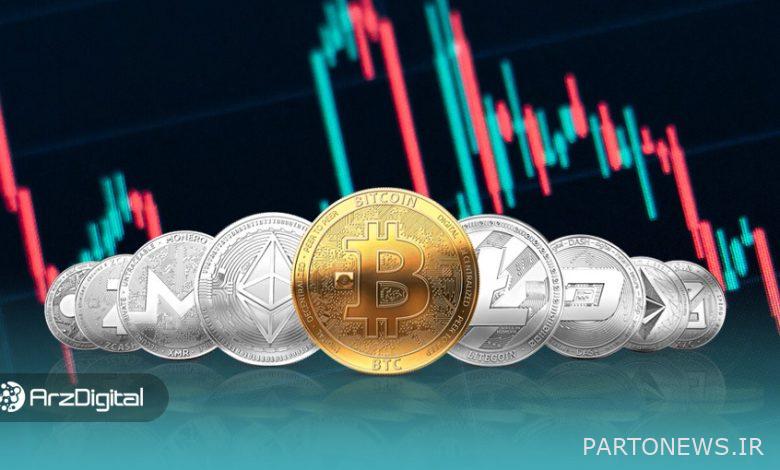What factors cause the instability and volatility of digital currencies?

The digital currency market is an unstable and volatile market. Cryptocurrencies like Bitcoin and Ethereum have seen massive ups and downs since their inception, some of which happened in just a few minutes. Many investors wonder if and how such fluctuations occur.
The issue of volatility in digital currencies is an issue that many investors and traders worry about when investing; But why do we see fluctuations in the price of Bitcoin and other digital currencies? Why is the digital currency market unstable? What factors are effective in the price fluctuation of digital currencies? In this article based on an article It is written from the Make Use A website, we examine the factors affecting the volatility of the digital currency market; So stay with us until the end of this article.
The reasons behind the fluctuations of the digital currency market
Digital currencies are the future of money and a fast and secure form of transactions that are not susceptible to government control or intervention. At the time of writing this article, the total value of the digital currency market is 1.2 trillion dollars, which has decreased by 39% compared to 2021. Digital currency is an asset class with high risk and high returns, and trading it requires a lot of analysis and understanding of the underlying technology and market drivers.
Digital currencies are designed to fluctuate. The digital currency market is highly speculative and there is no clear regulatory structure for their transactions. Therefore, digital currencies are traded at a more unpredictable price compared to stocks and bonds. This unpredictability can be good or bad depending on the investor’s perspective. For example, if you bought Bitcoin in 2011 at $20 and held it until 2017 when it hit $20,000, you would have made a 1,000x profit.
Also, if you bought Bitcoin at $10,951 in 2018 and sold it at $3,847 in 2019, you would have lost approximately 70% of your capital. Now the question arises, what factors affect the fluctuation of the price of digital currencies? Next, we examine the factors affecting the volatility and instability of the digital currency market.
Supply and Demand
To understand the volatility of digital currencies, it is important to understand how their supply changes as more people buy and continue the mining process to produce new coins. When more people want to buy Bitcoin or Ethereum, their value increases; Because the demand has increased. The increased demand and limited supply of coins (there are only 21 million bitcoins) causes their price to rise, as there are more people buying than there are people willing to sell.
However, as the number of available coins increases, their price decreases; Because more people will be motivated to buy them and most of them will intend to sell it; Therefore, the market becomes more competitive and, as a result, prices may decrease. For this reason, digital currencies with more circulating coins have cheaper prices compared to digital currencies with less circulating coins. When there are more coins in the market, the demand is less and the price goes down. This is one of the reasons why the price of a digital currency like Dogecoin does not reach $1. This applies not only to digital currencies, but also to stocks and other financial instruments.
Speculation and hype
One of the factors influencing the price fluctuation of digital currency is speculation and advertising. Usually when a new digital currency is released and people hear about it for the first time, the excitement is at its peak. This often causes people to rush to buy and sell new coins, which drives the price to unstable levels.
When people overestimate the value of the coin and take losses, the hype and speculation die out, and the resulting bubble eventually bursts, leading to a price crash. Big ups and downs for digital currencies have become quite normal. It goes without saying that influencers and celebrities also influence the price fluctuation of digital currencies. For example, after Elon Musk’s appearance on Saturday Night Live in May 2021 (May 2021), Dogecoin fell 91%.
Cost of production
The cost of producing tokens depends on two important factors: one is the hash rate of the network and the other is the power consumption of the network. In a proof-of-work system like the one in Bitcoin, miners compete to solve complex math problems to be rewarded with new tokens. The more competition there is to mine a digital currency, the harder it is to mine and the less profitable it is for miners to continue.
Miners can theoretically abandon it and choose another digital currency when mining a digital currency is not profitable for them; But this will cause a short-term fluctuation in the price of digital currency; Because miners switch to more profitable tokens or hold tokens for a longer time. This volatility may even affect the long-term success of certain tokens and cause them to lose market share over time. As a result, with the increase in mining costs, the value of digital currency increases. If the value of digital currency mined by miners is not enough to cover their expenses, they will not continue mining. Bitcoin mining is a clear example where the price changes according to the actions of the miners.

Competition
There are thousands of different digital currencies and new projects and tokens are launched every day. However, when competition becomes intense, the devaluation of cryptocurrencies such as Bitcoin and Ethereum may lead to lower prices.
Legal regulations and requirements
One of the factors driving down the price of digital currencies is the instability of governments around the world that seem to be applying more strictures to digital currencies. For example, in September 2017, China banned initial coin offerings (ICOs) and halted trading of a number of digital currencies. This incident caused the price of Bitcoin to drop significantly over a period of time.
Digital currency whales
Digital currency whales are large holders of digital currency. They usually have large amounts of digital currency and money at risk and can shake up the market by buying and selling large amounts of digital currency. For example, if someone owns the 4th largest bitcoin wallet in the world and decides to cash out some of his bitcoins, this action can cause the price of bitcoin to fluctuate wildly in the short term. Digital currency whales can manipulate its price and it doesn’t matter if this digital currency is Bitcoin or Ethereum or Dogecoin.

Conclusion
The digital currency market is a fluctuating, unstable and highly speculative market, and there is no specific regulatory structure in its transactions; Therefore, digital currencies trade at a more unpredictable price compared to stocks or bonds. This instability has created concerns for investors when entering this market. Various factors such as supply and demand, speculation, production cost, competition, regulations and existence of digital currency whales affect the instability of the digital currency market.
The bear market of 2022 has caused many people to doubt the survival and profitability of the digital currency industry. While some cryptocurrency advocates believe that markets will eventually stabilize and that cryptocurrencies will regain their value over time, others are generally pessimistic about the future of cryptocurrencies. Ultimately, only time will tell if digital currencies will reach their full potential as a global currency and payment method, or if their underlying technology will reach a technological dead end.

